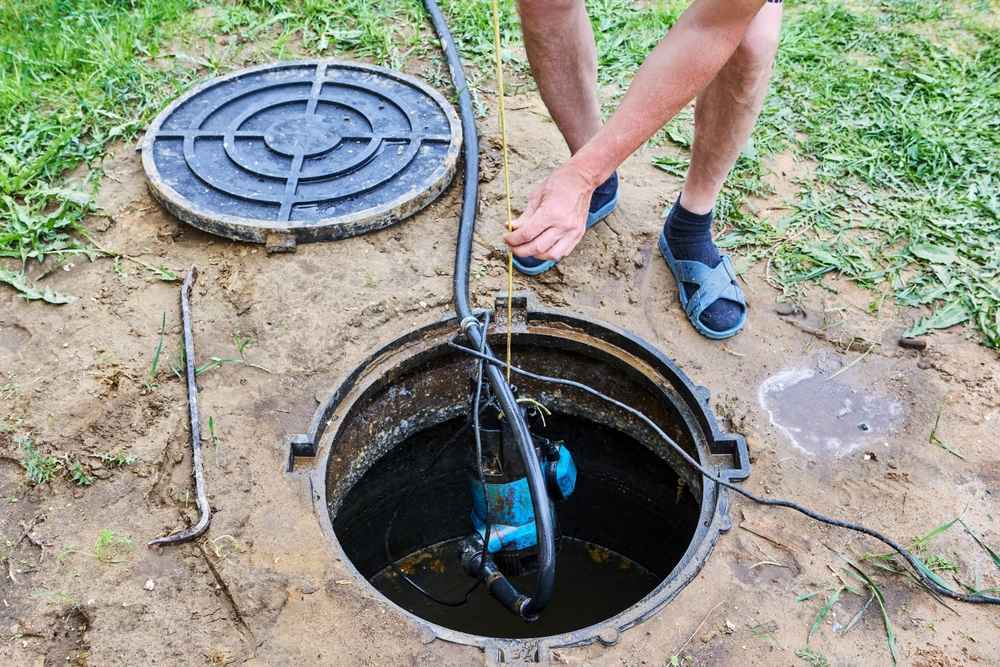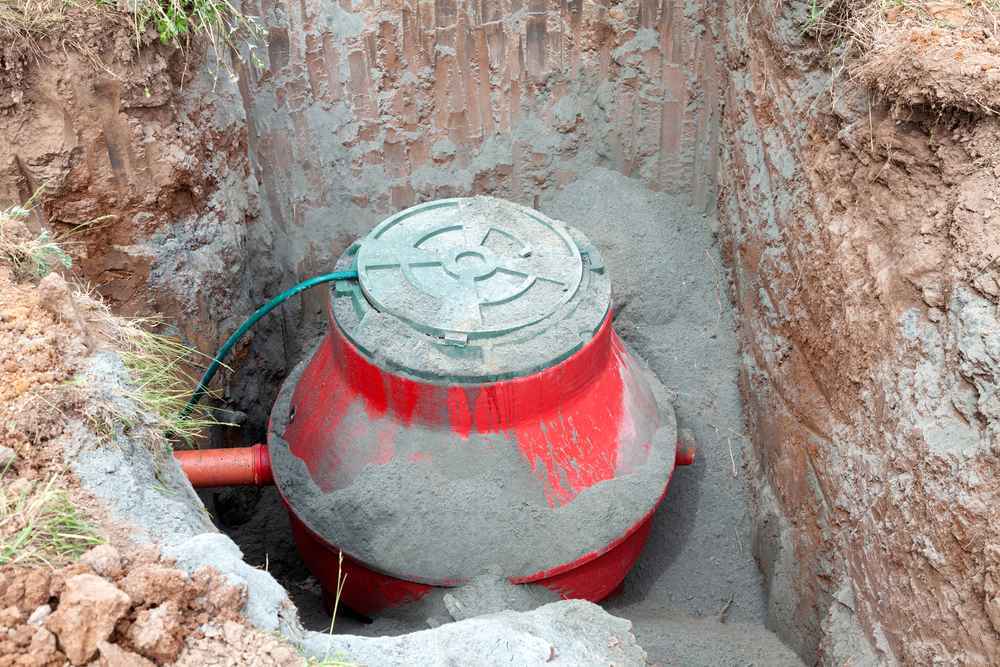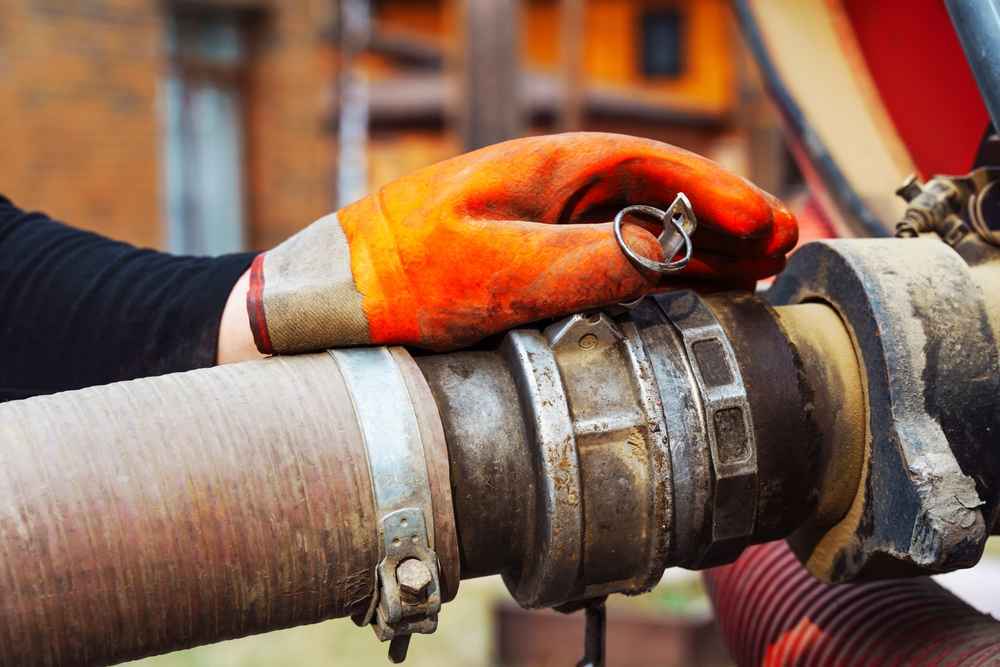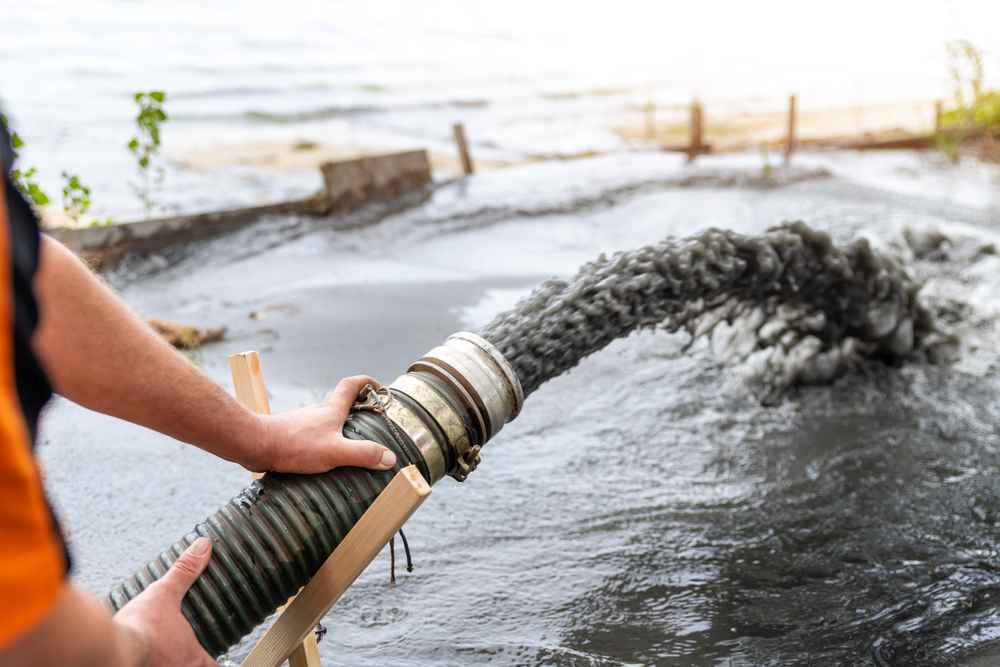SEWAGE EJECTOR PUMPS IN
EL DORADO COUNTY

ABOUT SEWAGE EJECTOR PUMPS
If a toilet, washing machine, or other plumbing fixture is installed below the main water line, for example in the basement, a sewage ejector pump can be installed to pump waste water, including solids, back up to the main septic line. The sewage ejector pump sits in a sump basin that is dug into the ground and can hold about 30 gallons of waste water. When the waste water reaches a predetermined level, a float triggers the sewage ejector to pump the water up to the septic line and out of the house before automatically shutting off until the next time it’s needed. The sump basin is sealed at the top so that no waste or foul odors can escape during operation of the sewage ejector pump, though a vent up and through the roof is necessary for proper ventilation. Because sewage ejector pumps involve the septic lines, proper permits are required when installing or repairing them. Due to the difficulty level of the job, and the disastrous results that could occur if the installation is done wrong, most homeowners would be well advised to hire a licensed plumber to complete the installation of a sewage ejector pump.
SUBMERSIBLE SEWAGE EJECTOR PUMPS
Sewage ejector pumps are designed to handle raw sewage and solid waste materials. These pumps are normally used to push raw sewage up hill from a whole home, basement bathroom, or external structure to a septic tank, aerobic treatment system, or gravity sewer main. Sewage pumps have a 2” or 3” discharge and can handle up to 2” spherical solids.


EJECTOR PUMP PROBLEMS
- Don’t flush the following items down the toilet:
- Wipes
- Paper Towels
- Sanitary Items
SEWAGE EJECTOR MAINTENANCE
As with any other appliance, you’ll want to properly care for your sewage ejector pump. These units are especially sensitive. So be aware of what you flush including diapers, wipes (even if they say flushable), feminine hygiene products, paper towels, and other foreign materials. These items put stress on your unit as it tries to force them upward.

FAQ PAGE:
SEPTIC SYSTEMS ARE EXPENSIVE. LET'S SAVE YOU SOME MONEY
Trust us, we get it. Nobody wants to throw money at something buried under the ground whose only job is to deal with stuff you don’t want to think about to begin with. That said, they’re expensive, engineered systems and if you wait until something’s wrong, they generally become a lot more expensive. Below we’ll try to give you some advice for keeping everything working correctly and answer some of the most common question we get.
OUR BUSINESS IS "YOUR BUSINESS", BUT WE'D RATHER JUST PUMP YOU OUT EVERY FEW YEARS
WE CAN'T STRESS THIS ENOUGH - GET YOUR TANK PUMPED OUT EVERY 3-5 YEARS!
We’re not telling you this so we can bill you for a pump out. We’re telling you this because the number one cause of septic system failure is not getting your tank pumped out often enough.
When your tank is full too often or for too long, bad things happen. On the gross side, we’ve seen full sewage backups into people’s homes. That’s a messy cleanup. On the expensive side, when your tank is full too often or too long, semi-solid material starts to flood into your leaching field. Your leaching field is meant to be porous enough to provide adequate drainage. When this overflow material seeps into the drainfield, it clogs those pores and eventually kills your field’s ability to filter out liquid waste. The only solution at that point is to build a new field. New fields are expensive – Much more so than a pump out every few years.
KNOW WHERE YOUR SEPTIC SYSTEM COMPONENTS ARE
Knowing where your septic tank, leaching field and connecting pipes are located are a huge time and money saver when work is being done on the system. We recommend either marking off your tank hole locations with stakes or better yet, installing risers to bring the openings to surface level so no digging is required.
FLUSH RESPONSIBLY
Basically, you should only be flushing toilet paper down the toilet. It’s meant to break up in you septic system. Everything else, from other hygiene products to paper towels needs to go in the garbage. Your system simply can’t process them.
OIL IS BAD FOR YOUR PIPES, WORSE FOR YOUR SEPTIC SYSTEM
Just like foreign objects in the toilet, grease and oil simply don’t break up the way they need to in your septic system. We know it’s easier to throw that bacon grease in the garbage disposal, but it REALLY is bad and will eventually cause expensive problems.Basically, you should only be flushing toilet paper down the toilet. It’s meant to break up in you septic system. Everything else, from other hygiene products to paper towels needs to go in the garbage. Your system simply can’t process them.
SAME GOES WITH OTHER STRONG CHEMICALS
Reasonable use of household cleaners, soap, bleach and disinfectants are fine, but keep drain cleaner to an absolute minimum and completely avoid solvents, paints, floor cleaners, motor oil and such out of your drain. It’s horrible for your septic system and bad for the environment.
ONLY GRASS NEAR SEPTIC COMPONENTS!
It’s important that deep rooting plants, especially trees, are not planted near any of your septic components. Roots from these plants WILL damage your system.
HOW OFTEN SHOULD I GET MY TANK PUMPED OUT?
The general rule of thumb is every 3-5 years, though factors such as the size of your household, long term guests, inadequate bacteria levels in the system and a improperly working leaching fields can speed up that time frame. If you’re not sure, call us out for an inspection.
WHAT ARE THE MOST COMMON SYMPTOMS OF A PROBLEM?
- Pooling water near leaching field and beyond
- Foul odor emitting from tank or leaching field vicinity
- Drains draining slowly
- Sewage backup in drains and toilets
- Grass around leaching field is exceptionally green
HOW DO I LOCATE MY SEPTIC SYSTEM?
Most newer septic systems will have access lids that are visible near ground level. If there is no access lid or other visible signs of a tank, it’s often helpful to contact the El Dorado County Environmental Management office at (530) 621-5300 (Placerville) or (530)573-3450 (South Lake Tahoe) as there will likely be a permit on record with information on the system’s location. If there’s no record available, simply give us a call and we’ll help you locate your system.
IS IT IMPORTANT TO INSTALL RISERS IF MY ACCESS LIDS ARE NOT CURRENTLY VISIBLE?
Having risers installed is well worth the investment as it will save significant time and money both finding your tank in the future and saving the hassle of having to dig it up every time you need your tank pumped. If you’re at elevation, it’s also possible that frozen ground in the winter could make it nearly impossible to dig out if a situation came up that your tanked NEEDED to be pumped immediately.
SINKS AREN'T DRAINING. IS MY TANK FULL?
It may or may not be. Generally, if only one drain is slow but the rest in your house are okay, it’s going to be a clogged drain. We’d recommend a plunger. If all of your drains are slow however, it’s probably a pretty good time to get your tank checked.
EXCITED TO SERVE YOU
We’ve been in this business for a long time but we’re admittedly new to El Dorado & Amador Counties. Our family has set down roots here and we’re excited to become a part of this community. We’re extremely friendly, hardworking folks and we’re here to help you. If you have any questions at all, please don’t hesitate to give us a call or find us on social media.
EL DORADO & AMADOR COUNTIES SEPTIC SERVICE
EL DORADO HILLS, CAMERON PARK, KYBURZ, COLOMA, SOMERSET, DIAMOND SPRINGS, APPLE HILL, GARDEN VALLEY, CAMINO, SHINGLE SPRINGS, SOUTH LAKE TAHOE, PLACERVILLE, MEYERS, POLLOCK PINES, GRIZZLY FLATS, GEORGETOWN, RESCUE, PLEASANT VALLEY, EL DORADO
